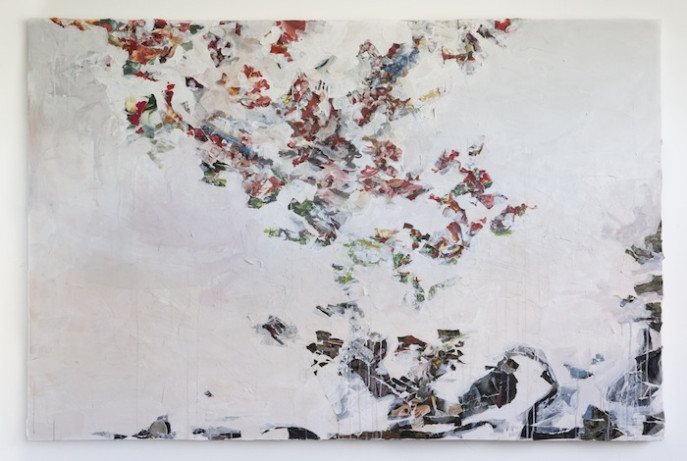
Rebecca Farr’s recent solo show at Klowden-Mann was a strong force to be reckoned with–both in terms of the physical presence of her paintings and in the contending contemplation her subject demanded.
With heavy paint on blotted and torn, layered paper, Farr collages print photos from 1970s and 80s coffee table books as her source material. She layers those with paper and heavy paint on wood panel, creating works that feel dense and heavy, yet very exciting and current.
Farr paints photos into vague suggestions of landscape paintings, as if her subjects inhabit a ghost world or ethereal dream. In “Sweet Broken Now,” Farr’s third solo show at Klowden-Mann, Farr made Manifest Destiny her subject of inquiry and aimed to capture the complex history arising from the ideology and religious fervor that justified white westward expansion during the early 1900s.
Although coming from a more formal oil painting practice of detailed landscape paintings, Farr avoided these traditional conventions in this show because, as gallerist Deb Klowden told me, Farr thought that it felt too static to simply paint her chosen subject as a landscape. This prompted her to start incorporating imagery and a deconstruction of an established archive of photos. I liked this turn in her process, because I had contemplated how one would capture the term, history, and complexity of Manifest Destiny itself when it was already painted historically through political (and propagandistic) landscape paintings and portraits. And, yet, how does one visually capture the history of a term that is a whitewashed violent ideology and justification? (See Gap’s 2012 “Manifest Destiny” t-shirt they released and the public outcry that arose from their playful invocation of genocide and violence).
